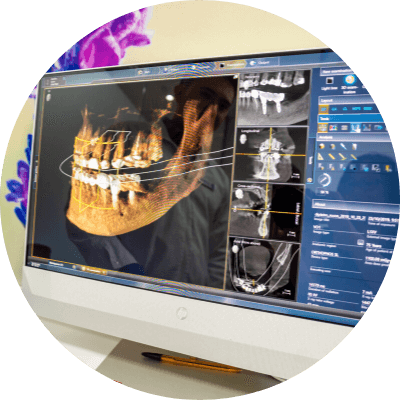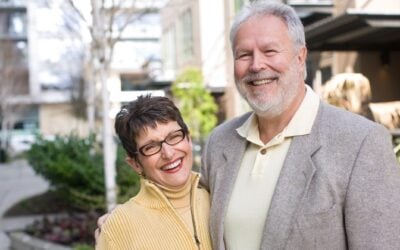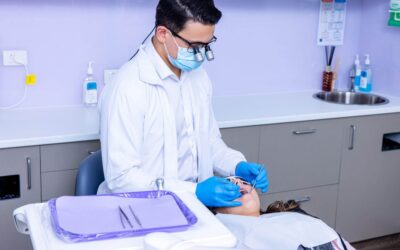Putting the Bite on Great Whites May Give Us a Second Chance at Our Own Pearly Whites
Putting the Bite on Great Whites May Give Us a Second Chance at Our Own Pearly Whites

If a white pointer was on the road, it could do 60km per hour.
For most of us, the mere mention of the planet’s biggest predatory mackerel brings immediate sounds and images to mind that once belonged only to a young Steven Spielberg, after glimpsing what Peter Benchley had in mind. Thanks to John Williams, for 42 years two notes have been a cultural spine-tingling quickening that put you on edge. Its E and F articulation and tempo sometimes curiously morphs into the shower scene soundtrack of Psycho but with a tug on a leg rather than a wet nylon curtain.
And who knows whether or not Beethoven was having shark thoughts when he wrote Symphony No. 7, 3rd Movement. He might have been in the bath where I certainly used to imagine a killer shark coming up through the plughole. The same one, by the way, that used to chase me for a couple of hours during swimming training.
When seen from above, the grey countershading of their body blends with the coastal sea floor. Their white underbelly means that when viewed from below, the shining sun makes them almost indistinguishable. It is the only shark to ‘spy hop’ – break the surface of the water to detect food – smell travels quicker through air allowing great whites to pick up on prey faster.
That they are packed with the most testosterone of any creature on the planet is an accolade belonging to the bull shark. It’s what makes them meaner than a great white and that’s no bull. They’ll target you and keep coming back. Just for you. Forget the thirty people within a five metre radius.
Duuuuuuuuh duh….duuuuuuuuh duh…
The only other Great White Shark with which people are familiar is Greg Norman. Were he to adopt the theme song, in the same way his logo depicts a great white without having even asked a shark, the only necessary differentiation would be “d’oh!” rather than “duh” if being worth $US350m sits somewhere on the offensive scale even if supporting human rights doesn’t.
The great white hasn’t ever had much support from we humans, who don’t like the idea of apex predators other than ourselves. And we can’t do nearly the job without high-powered weaponry and helicopters. Our mad and bad ability to kill everything has reached a stage akin to Greg Norman jumping his own logo.
1553 marks one of the earliest mentions of the great white in literature. Illustrated, and recognised as a distinct type of animal, French naturalist, ichthyologist and diplomat Pierre Belon recorded the shark in his book “Observations of Several Curiosities and Memorable Objects”. In it he describes the creature as Canis carcharias – based on the jagged nature of its teeth and its perceived similarities with dogs.
One can only speculate to which breed of dog, exactly, Monsieur Belon was indeed referring. French Bulldogs and Chihuahuas come to mind. And without scuba gear, he probably saw them from far, far away. Maybe he heard the bark of a seal’s last thought before lunch. Who knows how 1553 people perceived the world. I have trouble understanding some sensitivities now that were composed within my own lifetime.
Through foul means and mostly Universal Pictures cica 1975, the great white shark earned a grotesque reputation that only something like a golf investments company deserves. Laundering either was never going to be easy, and avenging long-(grey)nursed grudges is nary a simple task.
The Australian Government declared the great white shark a vulnerable species in 1999 because of a significant decline in population from sport fishing and drowning in beach safety nets. (Not so much for the sharks.) It’s currently protected under the Environmental Protection and Biodiversity Conservation Act.

These programs, and a dramatic shift in food sources are continuing to decrease east coast shark numbers. Before you think what a great move that is, that the Amity Island that lives inside you can be happy and carefree once more, Smithsonian Ocean paints a bleak and “sickly underwater swamp” as our oceans without sharks. They are as diverse in the depth, range, temperature and salinity of their environment as their variety of food, from plankton to whale. Without these apex predators the balance of a healthy ecosystem becomes impossible because there become too many unused by-products.
Like what we do up here, on land.
Removing sharks from the key role they have in maintaining clean and functioning oceans means larger fish species would mate with the weak or ill, no longer culled by sharks. Large marine species would prey more heavily on creatures that eat smaller organisms like algae and jellyfish, which in turn have nothing to keep their populations in check. 71% of the earth’s surface would be filled with detritus, infested with sea jellies, and far less abundant with diversity than it is right now and we don’t know the half of it. We know more about space than we do about the deep.
Ultimately, in a sharkless world Sharknado would never even mildly entertain, oxygen levels would deplete, and a whole lotta cataclysmic calamity goes with that.
(Jane. It had to be said.)
After committing hundreds of years of treachery and bullying against the ruler of a realm we have no business being in, suddenly we want to learn something from this 450,000,000-year-old species that has survived five massive extinction events, other than how cool it was in the ‘70s to have one of their teeth around your neck.
Fifty years later and we’re still interested in the teeth – only this time we want ones just like ‘em.
Not jagged and triangular (I’m talking to you, stupid Tik Tok) but regenerating, replenishing ones.
Since it was coined in the 1990s, the paradigm of reverse engineering body tissue has attracted much research and many scientists.
With advances in genetics, and the mapping of the human genome Tissue Engineering has become the new era of medicine. It is the friction of science against the quartz dreams where diseased or removed body parts are replaced by the genetic real deal without rejection and where no synthetic material is harmed in the production.
Who knows how many great whites it might take. It’s possible we’ll never know, although the “shark safety” culls might.
Sharks don’t actually regrow teeth. Inside their jaws are multiple rows that continually reform in the space that’s left. When one drops out and the one behind moves forward, the underlying tissue anchors, after carrying the tooth to the site like a conveyer belt.
Assistant Professor King’s College, London, Gareth Fraser, studies the relationships between evolution, development and regeneration. His team initially identified key genes in a small species of catshark (Scyliorhinus canicula) involved in tooth regeneration.
All vertebrate teeth, from marine to mammal, are incredibly similar in structure, composition and the genes that create and control them. It suggests that the genetic information of sharks is crucial to understanding how dental regeneration is coded, and how that process is switched off in humans.
Its eggs can easily be collected and the embryos inside can be raised to show us the precise set of developmental stages that tooth formation and regeneration goes through.
The discovery was within the epithelial cells that line shark’s mouth. In there, are special stem cell compartments responsible for continuous tooth regrowth. Without these, sharks would – like humans – be restricted to a finite set of teeth. This would obviously affect their apex status and much to Belon‘s delight, they might be more like dogs.
Early stages of the research include comparing human oral tissues that may still retain latent ability to regenerate teeth. Specifically, it is evaluating the active and highly regenerative shark dental stem cells with intriguing cell clusters in the adult human jaw that could be the target of a treatment to grow new teeth.
Worldwide, teams focus on the possibilities and variations that make the biogenic replacement of human teeth viable. The basic premise is that if humans already retain cells with future regenerative potential, culturing our own source of stem-like cells to restart that process of tooth development is achievable, to be implanted in the jaw where new teeth are needed.
A most interesting challenge of tooth bud implantation is directing the crown morphology – whether it’s a molar or incisor for instance – and there have been great breakthroughs in understanding the genetic signalling of tooth morphogenesis.
Tideglusib (not a word you can say without any teeth), an experimental treatment for Alzheimer’s, is a potent and irreversible small molecule glycogen inhibitor that has been found stimulate stem cell growth in the dental pulp of mice.
Researchers have also been able to regenerate tooth dentin, the softer, yellowish layer beneath the enamel. Dentin regeneration won’t restore an entire tooth, but it can be incredibly useful for reversing tooth decay with the bulk of the tooth able to regrow.
This gift of knowledge has the potential to change the health and wellbeing of mankind on a stratospheric scale. What’s not so certain is whether it will change the view we have of sharks, and the way we treat them, and their environment.
Hasn’t seemed to have helped mice much.
DISCLAIMER:
The content has been made available for informational and educational purposes only. New Gisborne Dental House does not make any representation or warranties with respect to the accuracy, applicability, fitness, or completeness of the content.
The content is not intended to be a substitute for professional personal diagnosis or treatment. Always seek the advice of your dentist or another qualified health provider with any questions you may have regarding a dental or medical condition. Never disregard professional advice or delay seeking it because of something you have read or seen on the Site.












